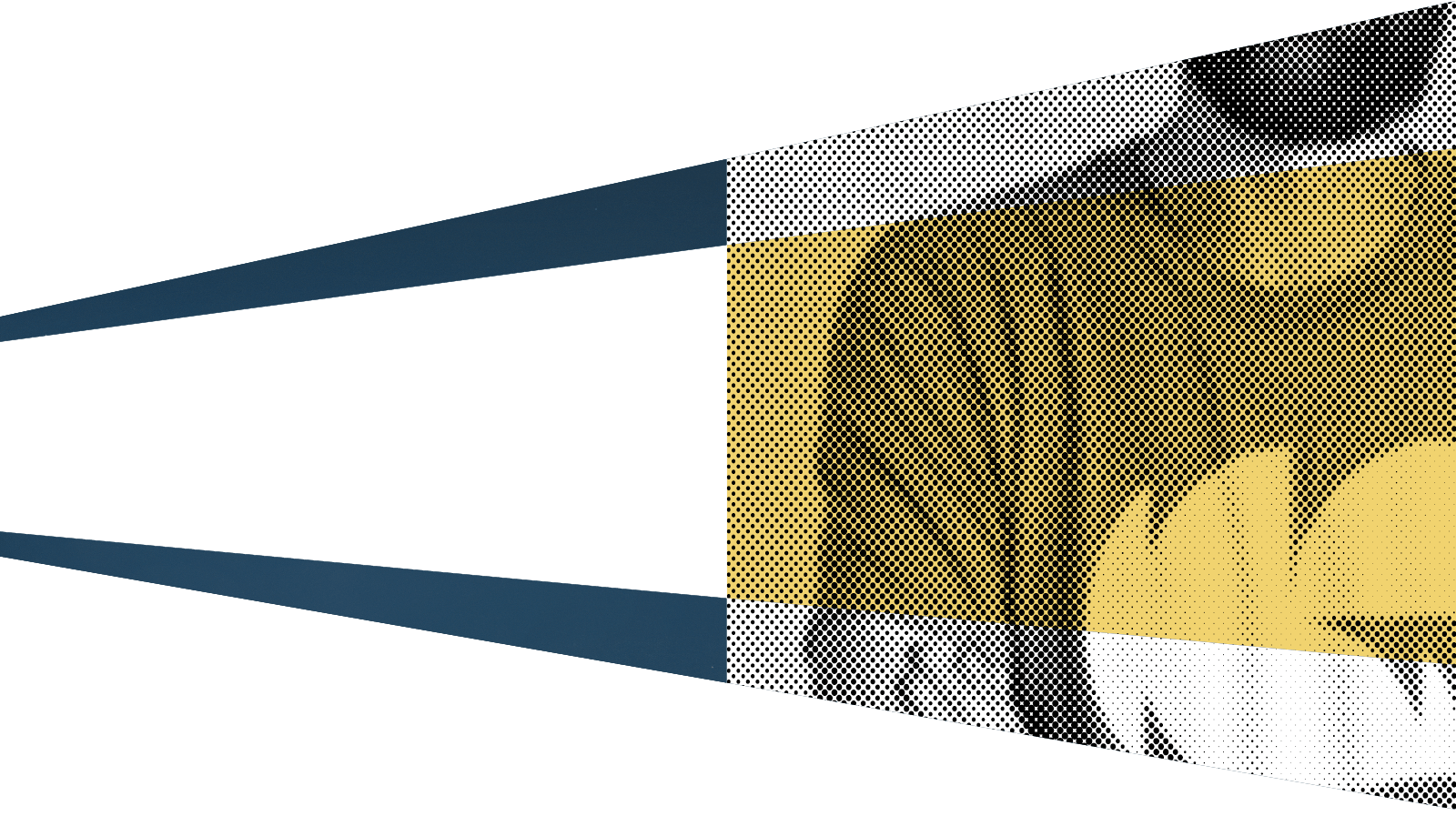
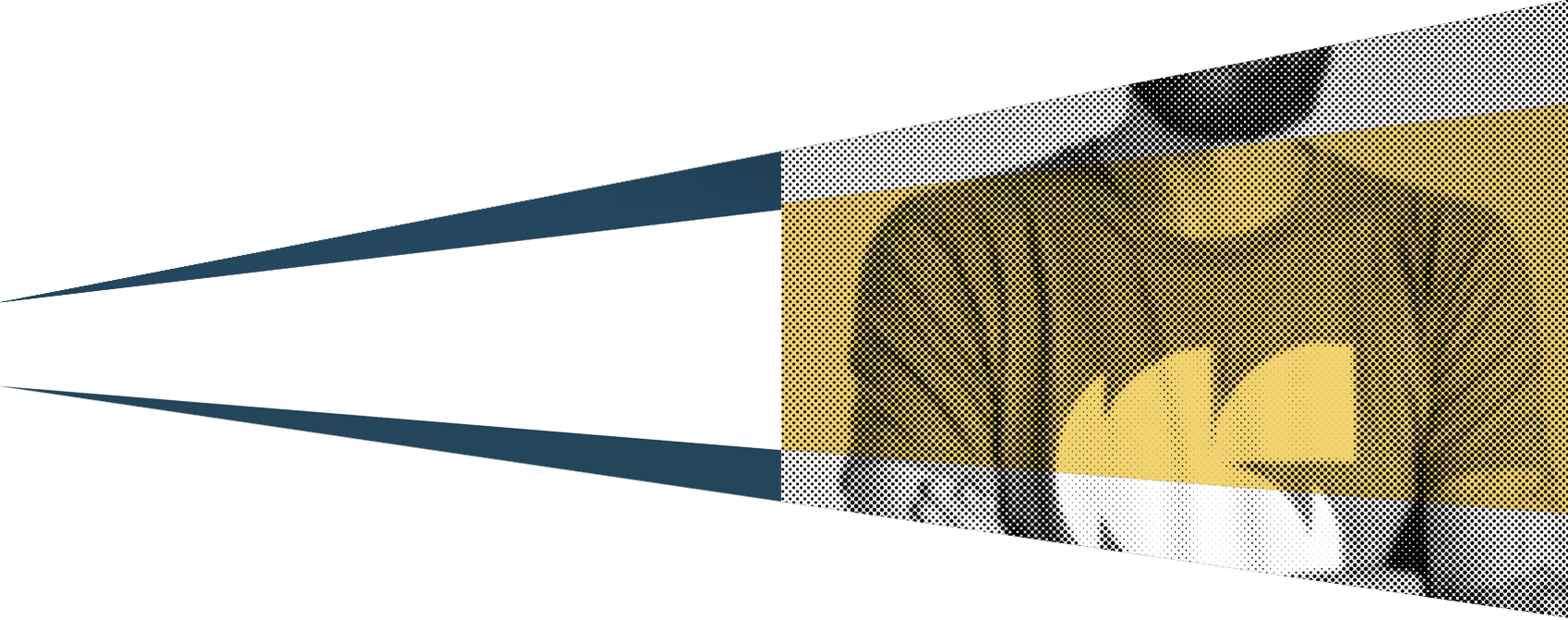
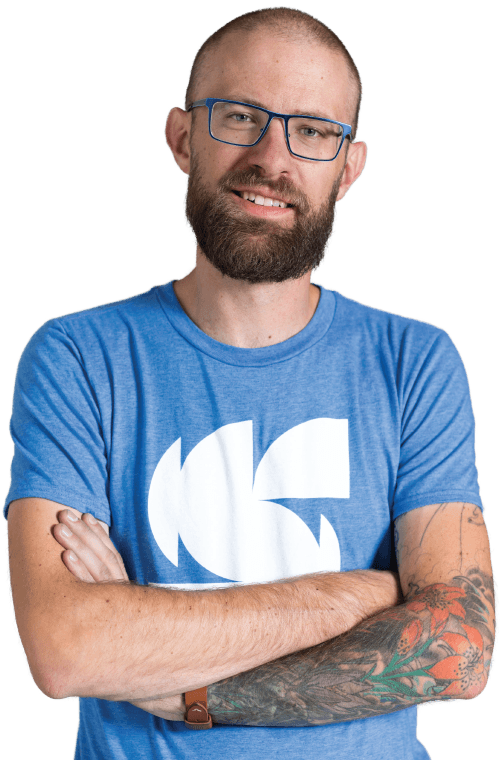
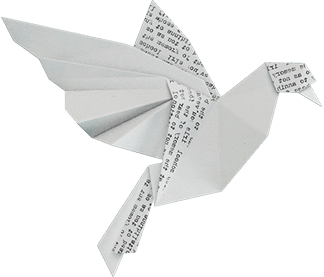
Journalism: Decelerated
Today’s journalists are navigating a maelstrom of uncertainty, but one Mount Royal alumnus has found a way to harness the winds of change and tell stories on his own terms.
Here’s the question Jeremy Klaszus would ask if he were interviewing himself: “Are you out of your mind?” He’s kidding, but only sort of. Klaszus is the mad genius (or madman, depending on the day) behind The Sprawl. The self-described “crowdfunded, ad-free, made-in-Calgary … reinvention of local journalism in tough times” functions in pop-up mode. When inspiration strikes, Klaszus sets up shop around one issue and takes a deep dive. He publishes his work on a variety of electronic platforms, all the while nurturing conversations on social media and in person. Then, The Sprawl folds up and goes quiet until the next edition arises. It’s Klaszus’ contribution to slow journalism.
The Sprawl’s credo is “We do depth, not breadth. Context, not clickbait. And we’re constructive, not cynical.” The slow journalism movement is a reaction to “churnalism,” which prioritizes quantity over quality in the daily hamster wheel that is 24/7 news coverage.
Traditional media tends to go fast and hard at a subject, hitting all the high points before moving on to the next headline. Slow journalism, however, recognizes that the story doesn’t end once sound bites are collected and bait clicked. Rather, it takes up residency behind those headlines, taking days, weeks, even months to expose multiple facets of a story.
“People don’t want just another torrent of information. Everyone’s already inundated. If you just turn the fire hose on someone with more information, does that help them? Do they actually want that? No,” says Klaszus, who graduated with a Bachelor of Applied Communications — Journalism (2006).
“My question for the daily cycle of media coverage would be, ‘Does it help people connect to their community?’ You find out a little bit about what’s going on, but does it actually deepen your understanding of the city you live in, and how it works and the complexity involved? It can tend to be quite simplistic.”
"Does it help people connect to their community?"
Practitioners of slow journalism include The Atavist Magazine, which posts one long-form non-fiction story a month; Serial, the wildly popular podcast that took more than a year investigating the conviction of Adnan Syed for the 1999 murder of Hae Min Lee; and the Out of Eden Walk. The last one takes the concept to the extreme. Two-time Pulitzer Prize-winning journalist Paul Salopek is on a decade-long journey on foot, tracing early human migration from Ethiopia to Argentina. Salopek says that slow journalism is telling stories “at a human pace of three miles an hour.”
Klaszus can’t move quite that slowly. The clock is ticking on the fourth edition of The Sprawl, which started in September 2017. Sitting in his de facto office — Phil & Sebastian’s headquarters in Calgary’s East Village — the bespectacled journalist is neck-deep in final preparations. The focus is on Calgary’s duelling 17th Avenues: how they’re being reshaped, what they say about Calgary, how their pasts were formed and where they might take us in the future. He shared the topic beforehand on social media, soliciting story ideas and subject matter experts. That kind of openness is rarely seen in traditional media, where protecting the exclusivity of a story is a point of pride.
As a journalist with 15 years of experience — he’s contributed to The Walrus, Reader’s Digest, The Globe and Mail and the Calgary Herald’s now defunct Swerve magazine, among others — Klaszus is still getting used to his new way of doing things. That was driven home recently when he heard a story on the radio that was similar to one he was working on.
“I was half asleep, but I heard CBC do a thing about bike infrastructure close to 17th Avenue S.E. And I’m, ‘Oh, I think I just got scooped.’ But then I thought, ‘It doesn’t really matter because they did a quick story on it, but I’m bringing more context and it will fit with the coverage I’m doing with everything else that is happening in the area.’ ”

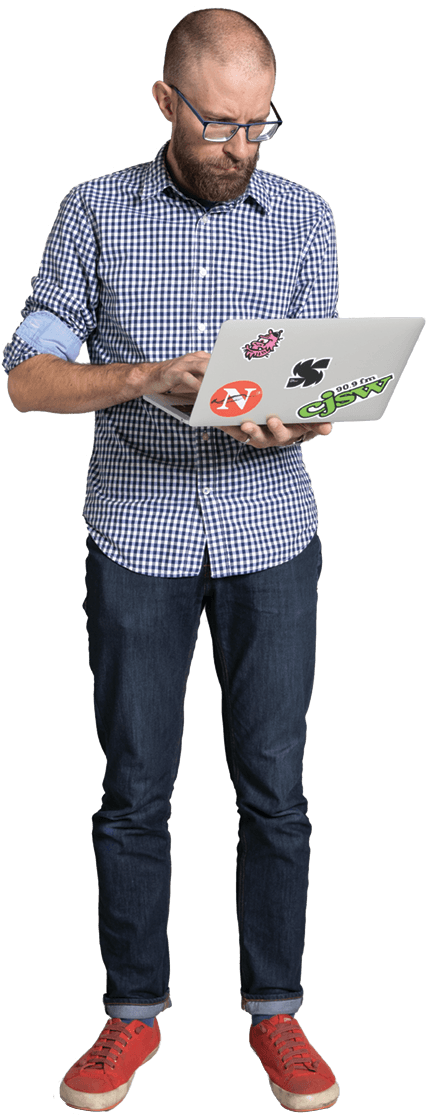
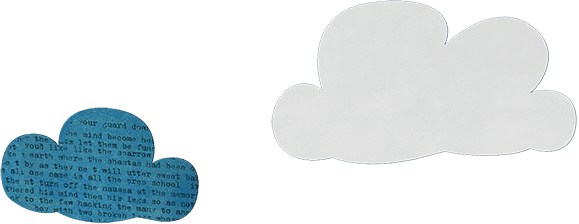
Works well with others
Adjusting his outlook is part of the 35-year-old’s evolution as a journalist. He established The Sprawl in part to cover stories that the ever-shrinking local newsrooms couldn’t or wouldn’t. The first edition took on Calgary’s 2017 municipal election. Klaszus got sucked into the vortex of trying to cover every aspect of the campaign. That was understandable, seeing as election time is like Halloween, Christmas and Easter rolled into one for municipal politics keeners. (In June, The Sprawl won Gold in Best News Coverage: Small Newsroom at the Digital Publishing Awards for its reporting on the election.)
But it was also in counterpoint to what he set out to do. “It was flat out, all the time. It was this reactive, almost frantic way of doing it,” he says. “I’ve shifted to more depth. It is more, ‘Okay, I’m going to decide what I cover, then go deep on it rather than reacting to things that are going on.’ ”
He’s also honed his sense on how to present stories: in traditional stories posted online, via Sprawlcast (a radio show on CJSW that doubles as a podcast), live streams on social media, transcripts and videos. He recently added Sprawl Soapbox, a means for readers to contribute content. The Red Mile Complete Street Advocacy Group, for instance, contributed a blog post to the 17th Avenue edition.
You can see that give-and-take in The Sprawl’s embrace of collaborative journalism. Klaszus partnered with the Calgary Journal, the online and print publication produced by MRU journalism students, to tackle one of the biggest stories in Calgary: the debate around hosting the 2026 Olympic Winter Games. Third-year students in Professor Sally Haney’s online journalism class went deep on five areas surrounding the bid.
Student Stephanie Babych valued partnering with The Sprawl. “It’s not so much mainstream media and big corporations anymore,” Babych says. “There are a lot of small startups that are managing to make a living and connect with audiences more.”
Haney says the partnership with The Sprawl meant more eyeballs on students’ work and reaching a new audience seemed to “really inspire” them. Collaborations in journalism aren’t limited to media outlets, however. This fall, Mount Royal’s journalism program is partnering with the Calgary Mental Health Association (CMHA) — Calgary Region for a pilot project. Third-year students will work with people in CMHA’s program delivery area, telling their lived-experience stories over the course of four to six weeks.
Fortifying future journalists with a battery of tools
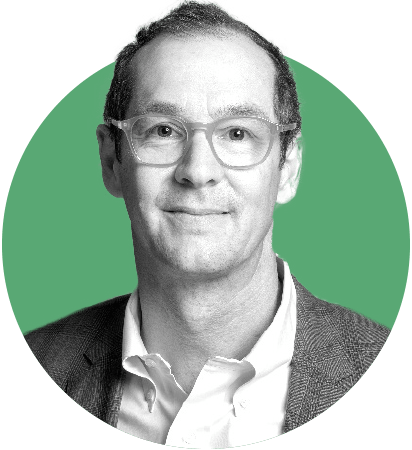
BRAD CLARK
Chair, Department of Broadcasting and Journalism
When Brad Clark started in journalism, he wrote stories on an electronic typewriter. The finished copy would go to the typesetter, who would print it out on sheets that were then run through a wax machine. The waxed sheets were then cut up and laid out on larger pages to make the St. Albert Gazette. That was 1986. In 1992, as a reporter for CBC Radio, Clark wielded a razor blade to cut pieces of quarter-inch (6 mm) audiotape that he’d then splice into a story.
Times have certainly changed. Now Clark, as chair of the Department of Broadcasting and Journalism in Mount Royal’s School of Communication Studies, and his team ensure students have access to the cutting-edge knowledge and technological prowess needed to navigate the ever-shifting media landscape.
“Members of our faculty are at the pointy end of the wedge of trying to figure out where our discipline is headed. We’re passionate and keenly interested in finding viable options,” Clark says. “We’re very nimble. We will incorporate elements into our individual courses on a trial basis as new things start to get some traction in the world of journalism.”
For example, radio and television have always been a component of the program, but “we’ve started to focus more specifically on podcasting in the past few years. The lessons of really good audio apply to podcasting, but there are also differences and distinctions,” Clark says.
While the basic tenets of journalism are unchanged — the commitment to serving the public, to pursuing truth in an ethical fashion, to accuracy and to sharing stories that illuminate our world and what goes on in it — so much in the industry has shifted. It’s not enough to write a story and send it to the typesetter anymore.
“The journalists we train have to be much more than good writers. They have to be good media producers as well: understand the needs of different platforms; be able to shoot, edit, record audio and video for all sorts of audiences,” Clark points out.
In addition to the subject matter, department members constantly debate the type of gear students should be using. Do aspiring reporters need a digital single-lens reflex camera, or will an iPhone do? Should the program add in 360° cameras, or hold off to assess the role of virtual reality in journalism?
Paul McAleer, who just graduated with a Bachelor of Communication — Journalism, values the consideration that went into crafting the curriculum behind his degree.
“Our instructors worked very, very hard to prepare us for this ever-changing industry,” McAleer says. “It’s a toolset of learning, of how to become a Swiss Army knife to tackle the variety of stories in different situations. It’s really prepared me to be adaptable, no matter how the industry changes.”
“We’ll likely be burrowing into some of the leading-edge programs that they deliver. Mental health is a massive public-health issue. Working with the CMHA, we get access to unique sources and resources,” Haney says.
“We may tackle producing some podcasts with the CMHA participants. We’re bringing editorial and technical expertise to the table. And we can also do our job as journalists, which is to investigate and uncover new information.”
It’s a brave new world, one vastly different than the one Haney navigated at the start of her journalism career. The us-vs.-them mindset that permeated newsrooms and kept reporters at arm’s length from the community is being challenged by approaches such as solutions and advocacy journalism.
“Journalists and their organizations can still use exacting objective methods without having to maintain such a cool distance between themselves and the community,” Haney says. “I think collaborations are critically important. The more that journalists and journalism organizations see themselves as deeply rooted in the community — and a part of that community — the better the result.
“With our journalism program, we see great value in collaborative partnerships where we have similar goals. Of course, we have to maintain our editorial independence and objectivity. The key thing is that at no time can the partner think of themselves as the client.”
This fall, Mount Royal is partnering with seven post-secondary institutions across Canada on a large-scale investigative project via the National Student Investigative Reporting Network. The project is hosted by the Institute for Investigative Journalism at Concordia University in Montreal, with media partners that include Global News, National Observer and the Toronto Star and its offshoots, including The Star Calgary. In a fortunate coincidence, the topic is water. Journalism professor Janice Paskey recently explored teaching water journalism through a grant from Mount Royal’s Institute for Environmental Sustainability.
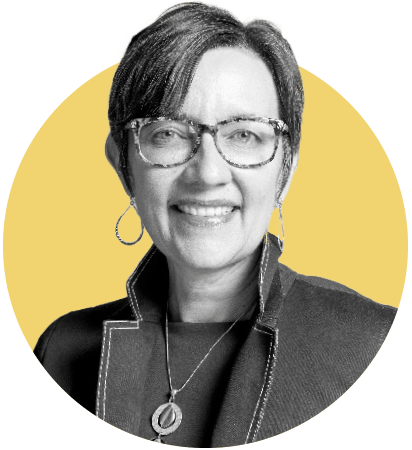
“The more that journalists and journalism organizations see themselves as deeply rooted in the community — and a part of that community — the better the result.”
SALLY HANEY
Professor, Journalism
“If water has always been there, and you haven’t gotten sick from it, you don’t tend to think too much about it,” Paskey says. “I have students who come from places where they use wells and others who have been reporting in communities with water issues, so there are some very different outlooks there.”
Three Mount Royal students will be extensively involved in the project this semester, with 15 more working on backgrounders. They’ll learn how to read research studies, do data requests and improve interviewing techniques.
“This is experiential learning. We form a virtual network and meet as a group every two weeks, often with the help of experts,” Paskey says. “Collaborations are becoming common in the industry. By taking part in collaborative projects, our students will be better prepared to join the workforce.”
In addition to working with seasoned journalists, students will potentially have their hands in stories that unfold on the national and international stage. For its part, the large media players get access to a fresh crop of talent versed in emerging technology. MRU students covered the last municipal election for Postmedia (the Calgary Herald and Sun) and the Calgary Journal. Lorne Motley, editor-in-chief of Calgary’s two Postmedia properties, is a Mount Royal journalism alumnus. He also served on the program’s advisory board, including as chair, for more than two decades.
“We’ve been trying to build on what we started with the election. These are great opportunities to showcase the students’ work in the daily papers here, and get it to a broader readership,” Motley says. “I like it because it helps the students, and it also helps bring stories to life that are more difficult for us to do these days. It’s great for both the Herald and the Sun, and also Mount Royal.”
Mount Royal students are collaborating with the Calgary Journal and CBC Calgary, as well. Since April 2018, the Life 2.0 project has featured works by students that focus on stories of immigrants and refugees.
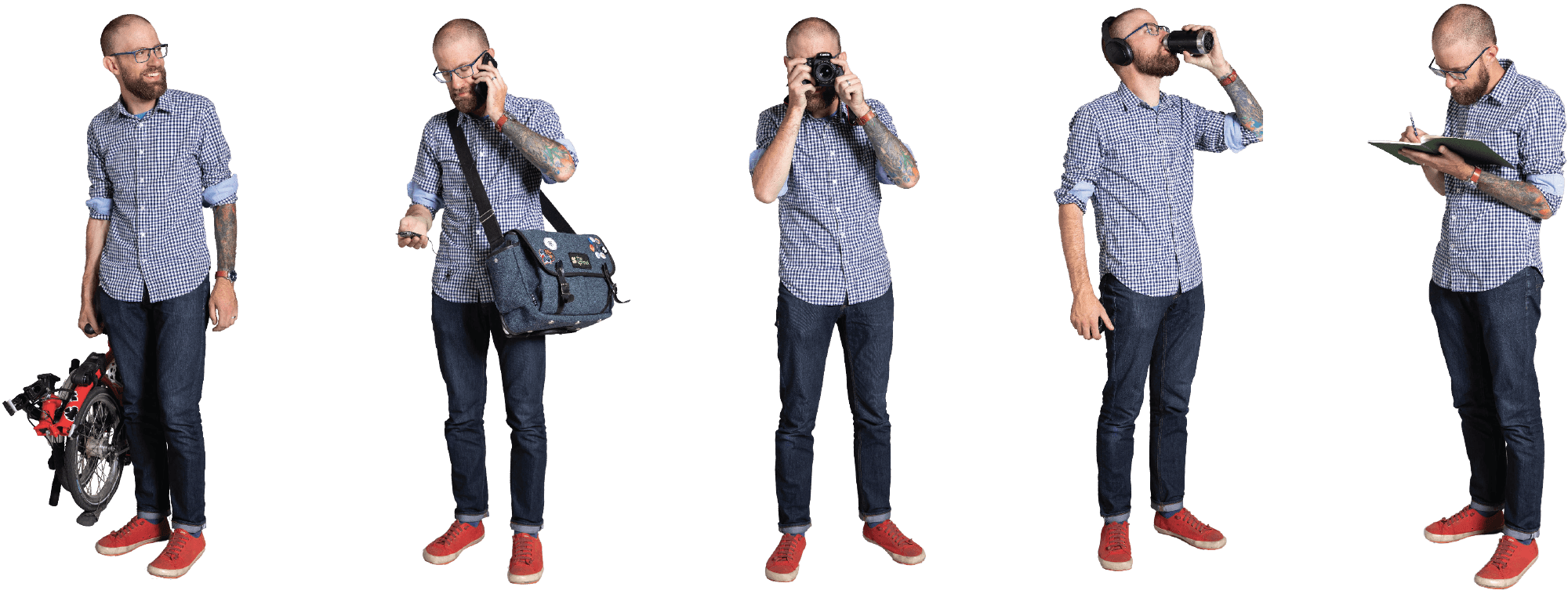
Who foots the bill?
Collaboration ties into the biggest challenge facing journalism: money and the collapse of lucrative print advertising. Salopek may have won a Pulitzer, but he is also supported by two grants, totalling nearly US $1 million, from National Geographic and a Kickstarter campaign. Traditional media hasn’t figured out a magic formula, either. La Presse, the storied Montreal French language newspaper that stopped printing a paper edition altogether in 2017, is becoming a non-profit, opening the door for funding from the public, government and charitable organizations. This model has a proven track record: ProPublica, a non-profit news organization founded in 2007, recently won its fourth Pulitzer Prize.
For now, The Sprawl is funded by its audience. Supporters can subscribe via donation through Patreon. As of this writing, The Sprawl has more than 500 registered patrons contributing around $3,800 a month. Klaszus’s goal of $4,000 a month will allow him to work on the venture full time. As passionate as he is about telling the untold stories of Calgary, the reality is that this is his job — a job that helps keep his family, including two children, housed, clothed and fed.
“It’s exhilarating some days and depressing other days. Some days, I’m ‘Oh yeah, this is awesome, blazing a new trail!’ Then other days, I’m ‘Oh man, what am I doing?’ ”
The financial pressure has let up for now, however. In April, Klaszus was awarded a spot in the Digital News Innovation Challenge (DNIC). It came with money — up to $100,000 in seed capital and $50,000 for marketing on Facebook — and access to hands-on coaching and workshops with senior-level mentors in digital news and journalism innovation. As one of five startups selected by Facebook, the DMZ (Ryerson University’s business incubator for technology startups) and the Ryerson University School of Journalism, Klaszus also gets straight talk on running a business.
“It’s exhilarating some days and depressing other days.”
“For me, the temptation is always just to do journalism, which is great, but it’s not enough to make this sustainable in the long run. Having a program where they challenge me with questions like, ‘You need to focus on growing your business. Are you going to have enough revenue to keep this going?’ is very valuable.”
He meets virtually with an entrepreneur-in-residence once a week, and flies to Toronto monthly for a group session with fellow DNIC recipients. Klaszus is in touch with independent journalism ventures around the world, from New York to Vancouver and beyond.
Having that support network — both through DNIC and the innovative journalism community as a whole — is critical to succeeding, he says. “We’re all sharing information and saying, ‘What’s worked? What hasn’t? How can we learn from each other?’ It’s important that we’re not duplicating the same research and the same work.”
The goal is to grow The Sprawl to the point where there are other paid contributors. Not only would that take some of the pressure off Klaszus, but it also would better reflect the diversity of Calgary and allow the outlet to provide in-depth coverage on a broader range of issues, he says. And if a deep-pocketed backer happened to magically fund the venture for a decade?
“I’d have a newsroom,” he says, then laughs. “But again, I would be doing it differently. I wouldn’t just jump into the fray that everybody else is in. There’s room to grow and to do so in a way that has that depth.”
— With files from Michelle Bodnar
Read more Summit
Alumni gone grad
Meet six alumni who have taken their degrees from Mount Royal into graduate programs in Calgary, across Canada and around the world.
READ MORE


